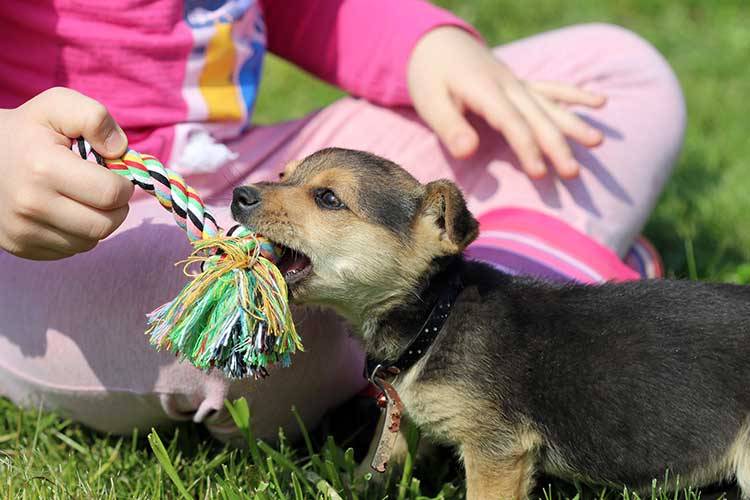6 Safety Tips for Children and Puppies
It’s that time of year where families are bringing new puppies home. One major concern most new pet owners have is introducing their new puppy to their children. Before your new puppy arrives, hold a family meeting and discuss each puppy safety tip in detail with your children. It’s vital to teach young children polite behaviors around puppies. If you are not sure how to handle transitioning a puppy into your family, it might be a good idea to consult a veterinarian Here are some safety tips that pertain to dogs of all ages but a few are specific to puppies only.
1. Crate Your Puppy in a Quiet Room
Place your puppy’s crate in a quiet place, such as your master bedroom. When puppies are crated, they need peace and quiet to rest and enjoy food filled toys. Refrain from placing your puppy’s crate in your children’s playroom, living room, kitchen or another busy area. Children should not harass your puppy, so close the bedroom door to ensure privacy.
2. Never Disturb Your Puppy While Eating
Puppies should be left alone during mealtime. When children approach a puppy’s food bowl, pet the puppy while eating or stick their fingers in the food bowl, this can cause a puppy to resource guard her food. It’s best to feed puppies in their crates with the crate door securely closed. Even better would be to feed your puppy her meals from food stuffed toys when crated. This applies to when your puppy is chewing on a bully stick or toy too.
3. Give Your Puppy Plenty of Space
Many children like to pick up and hold puppies like babies, but this can quickly annoy a puppy. It’s important for children to understand that puppies need plenty of space and that they should have the choice to be held or picked up.
Hugs and kisses are fine, if the puppy walks over and initiates this behavior. However, children should not walk over and hug or kiss a puppy first. Also, children should never sit, step on or lie down on a puppy. This hurts, and will cause the puppy to growl or bite.
4. Never Take Toys From Your Puppy
Puppies will chew anything and everything; it’s part of being a puppy. When a puppy grabs your child’s favorite toy, it’s important your child doesn’t pull the toy out of your puppy’s mouth. This will cause a tug-of-war game, and some puppies learn to resource guard toys from children. Instead, teach children 5 years and older to play the “trade” game. For children under 5 years of age, you should play the “trade” game.
5. Pet With Gentle Hands
Children should learn to gently pet puppies the moment a new puppy arrives in the home. Gentle petting involves slow strokes with light pressure along a puppy’s side. When children pet a puppy, they should use a flat palm and move slowly. Children should not pet puppies on top of the head, touch their faces, pull their tails, poke with fingers or throw items at the puppy. When children or adults pet puppies too quickly, it causes puppies to get excited.
6. Never Leave Children and Puppies Alone—Ever
Children and puppies (dogs too) should never be left alone together unsupervised ever. It can take less than a second for a young child to unintentionally hurt a puppy, and the puppy bites the child out of self-defense. When in doubt, place your puppy in her crate with lots of yummy treats if you need to answer the front door or cook dinner.






